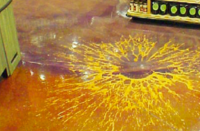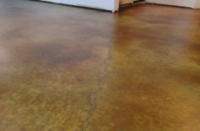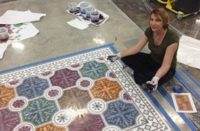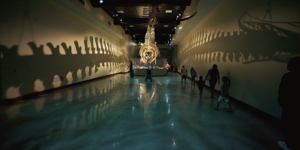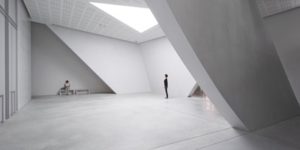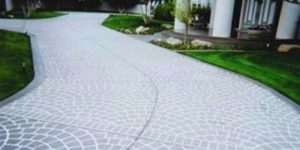 Before Austin was the capital of Texas and Texas part of the United States, there was San Felipe de Austin, a settlement founded in 1823 by the “Father of Texas,” Stephen F. Austin. Located along the banks of the Brazos River about 45 miles west of Houston, the Anglo colony served as the capital of the provisional government of Texas until 1836 when its residents burned it down during the “Runaway Scrape” retreat from Mexican Gen. Santa Anna’s invading army.
Before Austin was the capital of Texas and Texas part of the United States, there was San Felipe de Austin, a settlement founded in 1823 by the “Father of Texas,” Stephen F. Austin. Located along the banks of the Brazos River about 45 miles west of Houston, the Anglo colony served as the capital of the provisional government of Texas until 1836 when its residents burned it down during the “Runaway Scrape” retreat from Mexican Gen. Santa Anna’s invading army.
In its heyday, San Felipe de Austin was home to Texas’s first land office, postal service and also schools. Although this frontier outpost’s existence was short-lived, its historical impact is long-lasting. For 13 years, the colony was a prominent hub for commerce, government and diplomacy, with ties to nearly every significant character and event of the era.
To commemorate this colony that contributed so much to Texas’ history, the Texas Historical Commission had a 10,000 square-foot state-of-the-art museum built at the historic site in San Felipe near Sealy. Here, visitors can experience interactive displays that allow them to be immersed in the settlers’ daily lives.
“We truly believe the museum experience at San Felipe de Austin will reshape the way Texans think about the Mexican-Texas era and the eventual march to independence,” says Bryan McAuley, site manager. The Republic of Texas officially became part of the United States in 1845.
With an impressive array of both decorative concrete finishes and new products, the San Felipe de Austin State Historic Site and museum in Texas offer visitors the opportunity to understand the colony’s way of life and its surrounding geography.
The vision comes to life
The architects, Howard+Revis Design out of Washington, D.C., envisioned serviceable artwork where highly detailed reproductions are captured in the concrete flooring. These horizontally placed masterpieces encompass both interior polished concrete and exterior decorative concrete areas designed to be weathered over time by the elements.
Meticulous maps polished to perfection
Upon entering the main lobby, visitors encounter an extremely detailed map of the Texas territory and the original Mexican land grants. Artists used a combination of techniques to make the polished concrete look and feel like a 200-year-old map that accurately depicts the area’s mountains, rivers, creeks, towns, roads and cattle trails.
Using L&M Vivid Dye, a collection of solvent-based concrete dyes manufactured by Laticrete International, artisans altered and customized selected colors to mimic the faded parchment texturing of hand-drawn maps from that era. To accurately portray the map’s borders and small creeks down to the smallest detail, they used black dye and acid gel with precut and line stencils. It took seven layers of stenciling, texturing and coloring to achieve the final artistic rendering.
 The texturing effects of the acid etching allowed the black dye to penetrate the concrete and magnify the details. Installers locked the custom color variations into the concrete using L&M Lion Hard, a chemically reactive densifier. Installers also used L&M PermaGuard SPS, a penetrating stain protection system, and applied it near the end of the polishing process.
The texturing effects of the acid etching allowed the black dye to penetrate the concrete and magnify the details. Installers locked the custom color variations into the concrete using L&M Lion Hard, a chemically reactive densifier. Installers also used L&M PermaGuard SPS, a penetrating stain protection system, and applied it near the end of the polishing process.
They mechanically polished the interior artwork to provide a shine. They did this while also lowering the space’s maintenance cost and also lessening the effects of wear from foot traffic. Overall, the artworks’ square footage is quite impressive: While the average 2-D artwork found in museum lobbies across the country measures about 16 square feet, San Felipe de Austin museum’s concrete artwork sprawls a good 750 square feet across the main entrance.
Map outdoors protected
Pushing through the north doors leads museum visitors to the outdoor map plaza. This exhibit is a reproduction of Steven Austin’s original Colonial submission to the Mexican government. It accurately portrays the numbered hand-drawn layout of the original colony, including city plot, farm plot and local water sources represented as Austin drew them.
The textural variance among all the independent items is visually stunning. Decorative concrete artisans achieved these effects through multilayered sandblasting, scoring, embossing, etching and pigment coloring techniques. Due to the anticipated negative effects caused by ultra-violet rays and inclement weather, designers ensured that the exhibit’s artwork was extremely durable, UV-stable and easy to maintain by museum facility employees.
The only thing that surpasses the visually stunning effects is the functionality of the outdoor exhibit. This 3,000-square-foot work of concrete art will easily handle several hundred thousand visitors per year without any significant issues. The exterior color agents used have an estimated 5 percent color fade over 20 years.
They locked these coloring agents in with L&M Lumiseal Plus, a high-solids, acrylic sealer designed for outdoor decorative concrete. The sealer won’t allow stains to penetrate or the color to migrate. Both of would lower the overall aesthetics of the outdoor map plaza over time.
A project of firsts in decorative concrete
This project had several firsts:
- A created-in-real-time acid-etching gel designed to make the line work details more vivid.
- A new, thicker sandblasted map with a modified glue to create a high-strength bond to the existing substrate.
- A high-viscosity, low-bleed, exterior pigment color with a sealer component mixed in.
- A wide variety of indoor and outdoor decorative concrete artwork finishes that had never been in use together on a single project.
These first-use products and processes were necessary to overcome the project challenges inherent in using foundational concrete as the palette for artistic creation. All the components successfully came together, and the Texas Historical Commission hosted a grand opening in spring 2018.
Special thanks
This project wouldn’t have been possible without the vision and the willingness to push the limits of decorative concrete by architects Jeff Howard and Tracy Revis of Howard+Revis and David Stephenson of Polished Concrete Consultants.
Carlos Acosta from American Concrete Concepts did the intricate scoring in the space. American Concrete also completed the polished concrete on the interior of the museum.
All the coloring and amazing artwork, both interior and exterior, were completed by Floormap Inc. of Bentonville, Arkansas. Specific thanks goes to Rachel Knigge, Kathren Knigge, Gene Ortiz, Natalie Peyrez, Hannah Roberts and Brandon Schultz.
Stephenson and Joe McReynolds of Polished Concrete Consultants acted as the general contractor for all concrete components. Special thanks to the Texas Historical Commission for its input, directional ideas and financing.
YouTube video:
Project at a Glance
Project: San Felipe de Austin State Historic Site museum
Client: Texas Historical Commission
Architect: Howard+Revis Design, Washington, D.C. | www.howardrevis.com
General Contractor: Polished Concrete Consultants, McKinney, Texas, | www.polishedconsultants.com
Scope of Project: Historical artwork was adapted for concrete using cutting-edge technology.
Most Challenging Aspect: Working with multiple parties to take the extremely fine detail and translate that into a process that would work on concrete with input and required approval of multiple groups of (out-of-state) architects, contractors and the Texas Historical Commission.
Products Used: L&M Vivid Dye, L&M Lion Hard, L&M PermaGuard SPS and L&M Lumiseal Plus. Laticrete International manufactures all of these products. Floormap stencils. Aluminum oxide; Ameripolish ColorJuice, HTC 950 grinder and also HTC tooling to complete the polished concrete interior area.
